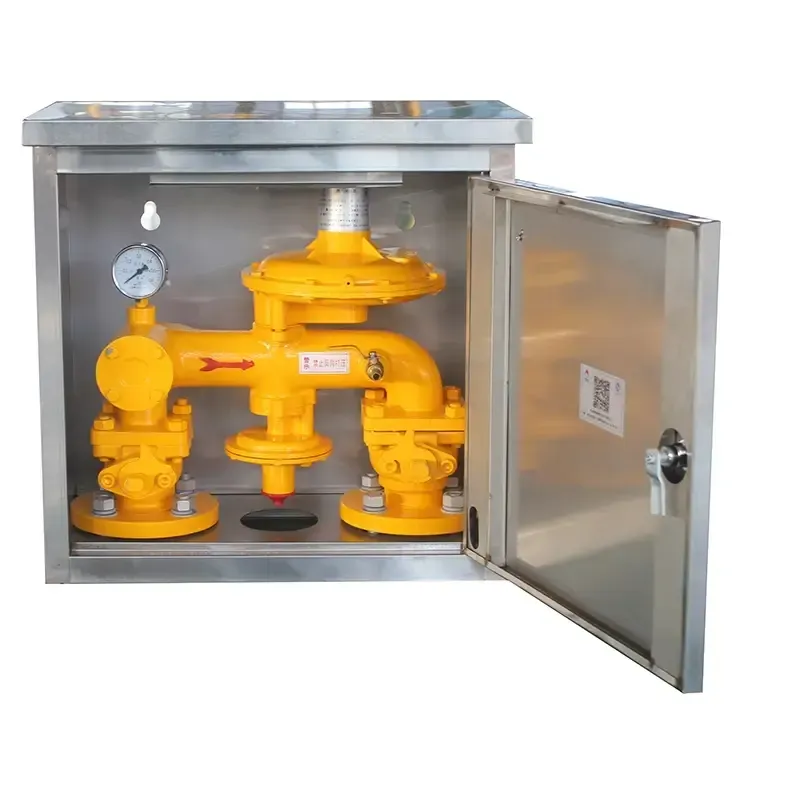
Nov . 14, 2024 16:44
Back to list
المبادل الحراري للغاز الطبيعي
Heat Exchangers for Natural Gas An Overview
Natural gas has become one of the most significant sources of energy worldwide, playing a crucial role in heating, electricity generation, and as a feedstock in the chemical industry. To optimize the use of natural gas in various applications, efficient heat exchangers are vital. These devices facilitate the transfer of heat between two or more fluids (which can be liquid, gas, or a combination of both) without mixing them. This article delves into the fundamental principles, types, and applications of heat exchangers specifically designed for natural gas systems.
Principles of Heat Exchange
The primary function of a heat exchanger is to transfer thermal energy between two substances, hence regulating temperatures in industrial processes. The efficiency of a heat exchanger is assessed through its overall heat transfer coefficient, which considers the thermal conductivity and flow characteristics of both fluids involved.
The heat transfer process comprises conduction, convection, and sometimes radiation. In most natural gas applications, convection plays a predominant role, as the transfer occurs through fluid movement. Heat exchangers can operate in various configurations, including counterflow, parallel flow, and crossflow, each having its advantages regarding temperature gradients and overall efficiency.
Types of Heat Exchangers
Different types of heat exchangers are utilized in natural gas applications, each designed for specific conditions and requirements
1. Shell and Tube Heat Exchangers These are among the most common types used in natural gas processing. They consist of a series of tubes, one set carrying the hot fluid and the other the cold fluid. The heat transfer occurs through the tube walls. They can handle high pressures and temperatures, making them suitable for natural gas applications.
.
3. Air-Cooled Heat Exchangers Often employed for natural gas compression and cooling, these exchangers use ambient air to dissipate heat from the gas. They are energy-efficient and do not require large amounts of water, making them environmentally friendly.
المبادل الحراري للغاز الطبيعي

4. Fin Tube Heat Exchangers These are efficient for applications where small temperature differences exist. The fins increase the surface area available for heat transfer, thus improving performance.
Applications in Natural Gas Systems
Heat exchangers are integral to various natural gas operations, including
- Cryogenic Processing In the liquefaction of natural gas (LNG), heat exchangers are crucial in cooling the gas to very low temperatures. This process allows for easier storage and transportation.
- Gas Compression When natural gas is compressed, it generates heat. Heat exchangers are used to remove this heat, ensuring efficient operation and protecting equipment from thermal damage.
- Regeneration in Power Plants In combined cycle plants, heat exchangers capture waste heat from gas turbines and use it to pre-heat water for steam generation, improving overall efficiency.
- Refrigeration Systems In industrial refrigeration and air conditioning systems that utilize natural gas as a source of energy, heat exchangers help in transferring heat away from the system, maintaining desired temperatures.
Conclusion
As global energy demands rise, ensuring the efficient utilization of natural gas becomes increasingly crucial. Heat exchangers play a pivotal role in optimizing the thermal properties of natural gas systems, enhancing efficiency, and reducing operational costs. By employing various types of heat exchangers, industries can achieve better thermal management, ultimately supporting the sustainable and effective use of natural gas as a critical energy resource. As technology advances, the development of even more efficient and environmentally friendly heat exchanger designs will pave the way for enhanced performance in natural gas operations.
Next:
Latest news
-
Safety Valve Spring-Loaded Design Overpressure ProtectionNewsJul.25,2025
-
Precision Voltage Regulator AC5 Accuracy Grade PerformanceNewsJul.25,2025
-
Natural Gas Pressure Regulating Skid Industrial Pipeline ApplicationsNewsJul.25,2025
-
Natural Gas Filter Stainless Steel Mesh Element DesignNewsJul.25,2025
-
Gas Pressure Regulator Valve Direct-Acting Spring-Loaded DesignNewsJul.25,2025
-
Decompression Equipment Multi-Stage Heat Exchange System DesignNewsJul.25,2025

